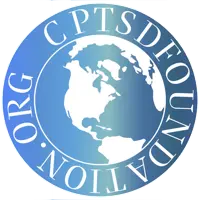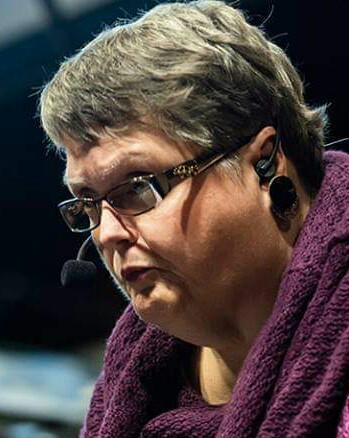Everyone experiences some version of the winter blues when they are caught inside and unable to move about as much as they would like because of the cold and snow. But some people experience a type of major depression that affects them in the fall and winter called seasonal affective disorder that is highly impairing and disruptive to their lives.
What is this strange form of depression and how does it relate to other forms of mental health problems?
This article will focus on answering these questions about the relationships between seasonal affective disorder (SAD), complex post-traumatic stress disorder (CPTSD), and complex relational trauma.
What is SAD?

To be clear from the start, many who suffer from SAD have not experienced complex relational trauma, so it is unwise to say that SAD is a trauma-related disorder. Indeed, SAD is thought to have physical causes, not traumatic ones.
Seasonal affective disorder is a form of major depression that affects an estimated 10 million Americans with another 10-20% having a milder form. SAD is four times more common in women than men.
SAD doesn’t only occur in winter as it can also form in the summertime, but that is much rarer.
The symptoms of seasonal affective disorder in winter are as follows:
- Tendency to oversleep
- Weight gain
- A drop in energy levels
- Feelings of hopelessness and sadness
- Decreased physical activity
- Fatigue
- Irritability
- Difficulty concentrating
- Avoidance of social situations
- Suicidal thoughts or actions
The symptoms of SAD in summer are slightly different:
- Weight loss
- Insomnia
- Poor appetite
- Agitation
- Anxiety
No matter when people are affected by SAD they are critically ill and should take their condition seriously.
What is Complex Post-Traumatic Stress Disorder?

Complex post-traumatic stress disorder forms in response to chronic traumatization through long-term emotional, physical, and sexual abuses, domestic violence, being held captive, living in a war zone, and more negative experiences.
While there are exceptions, it is children who are most likely to form CPTSD because they are more vulnerable and totally reliant on their caregivers to meet their most basic needs for life. When these needs are not met and there is no foreseeable escape in sight, the psyche can break down and the survivor’s sense of self and safety is affected deeply.
Because these children’s brains are still developing, severe trauma interrupts the course of their psychological development.
CPTSD is different from PTSD in several ways including the fact that it forms because of repeated incidences of trauma and its symptoms which include the following.
- Losing memories of trauma or reliving them
- Difficulty regulating emotions that often manifest as rage
- Depression
- Suicidal thoughts or actions
- Sudden mood swings
- Feeling detached from oneself
- Feeling different from others
- Feeling ashamed
- Feeling guilty
- Difficulty maintaining relationships
- Difficulty trusting others
- Seeking our or becoming a rescuer
- Feeling afraid for no obvious reason
- Having a feeling of always on the alert
- Becoming obsessed with revenge on the perpetrator
- Feeling a loss of spiritual attachment and either ignoring or depending upon religion for self-worth
As with the symptoms of SAD, these symptoms are severe and will need professional treatment.
What is Complex Relational Trauma?

Complex relational trauma is not found currently in the Diagnostic and Statistical Manual of Mental Disorders 5th edition (DSM-5), so it is not an official diagnosable problem. Complex relational trauma is often interchanged with the terms complex post-traumatic stress disorder and developmental trauma.
In other words, CPTSD and complex relational trauma overlap so much as to be almost the same thing.
Complex relational trauma is trauma that occurs in primary relationships with parents, caregivers, guardians, and anyone who is in power over us. There is always a level of someone having power over the other for this type of abuse to occur. Complex relational trauma occurs more than once and usually over an extended length of time.
In fact, complex relational trauma need not end in childhood but can continue on into adulthood through different perpetrators such as leaving an abusive father’s home only to marry and live with an abusive husband.
To make it simple, complex relational trauma is any treatment from someone you look up to that is demeaning, erodes your dignity, destroys your feeling of safety, and hampers your developing a sense of well-being.
What is the Connection Between the Three?

The connections between the three conditions, SAD, CPTSD, and complex relational trauma are hazy even for mental health professionals and researchers. However, let us examine the three together and see what we come up with.
The term complex post-traumatic stress disorder is often translated as complex relational trauma and vise versa.
Seasonal affective disorder, a form of major depression, is caused and exacerbated by complex relational trauma.
Remembering that not everyone who suffers from SAD has experienced complex trauma in their lives, it is fairly clear, to this author at least, that people who experience seasonal affective disorder have experienced some form of child abuse in their past that has altered their brain and psychological developments.
It is important to note that neither seasonal affective disorder nor complex relational disorder is in the DSM-5, but they change the lives of millions in the United States every year.
Pulling It All Together
Seasonal affective disorder is not an unusual illness with millions suffering from its effects every year. SAD is disruptive and in some cases disabling.
Complex post-traumatic stress disorder is a disorder formed from repeated and severe abuse with entrapment where the child feels there is no escape.
Complex relational trauma involves someone of higher power abusing someone of lesser power as in a parent/child relationship but is not confined to that relationship alone.
This article’s main focus was to inform its readers about the connections between SAD, CPTSD, and complex relational trauma. In future posts, we shall examine together with other causes of seasonal affective disorder and why so many of us feel so lousy during the holidays.
Try to love and live the question itself. Don’t search for the answer. Perhaps then, someday far in the future, you will gradually, without even noticing it, live your way into the answer. ~ Rainer Maria Rilke
When you follow your bliss… doors will open where you would not have thought there would be doors; and where there wouldn’t be a door for anyone else. ~ Joseph Campbell

If you a survivor or someone who loves a survivor and cannot find a therapist who treats complex post-traumatic stress disorder, please, contact CPTSD Foundation. We have a staff of volunteers who have been compiling a list of providers who treat CPTSD. They would be happy to give you more ideas about where to look for and find a therapist to help you. Go to the contact us page and send us a note stating you need help, and our staff will respond quickly to your request.
Are you a therapist who treats CPTSD? Please, consider dropping us a line to add you to our growing list of providers. You would get aid in finding clients, and you would be helping someone find the peace they deserve. Go to the contact us page and send us a note, and our staff will respond quickly.
Shortly, CPTSD Foundation will have compiled a long list of providers who treat complex post-traumatic stress disorder. When it becomes available, we will be putting it on our website www.CPTSDFoundation.org.
Make sure to visit us and sign up for our weekly newsletter to help keep you informed on treatment options and much more for complex post-traumatic stress disorder.
If you or a loved one live in the despair and isolation that comes with complex post-traumatic stress disorder, please, come to us for help. CPTSD Foundation offers a wide range of services, including:
- Daily Calls
- The Healing Book Club
- Support Groups
- Our Blog
- The Trauma-Informed Newsletter
- Daily Encouragement Texts
The Healing Book Club
Today, CPTSD Foundation would like to invite you to our healing book club, reading a new book that began in September. The title of the latest featured book is The Body Keeps the Score by Bessel van der Kolk.
Led by Sabra Cain, the healing book club is only $7 per month, the fee going towards scholarships for those who cannot afford access to materials offered by CPTSD Foundation.
Should you decide to join the Healing Book Club, please purchase your books through our Amazon link to help us help you.
All our services are reasonably priced, and some are even free. So, to gain more insight into how complex post-traumatic stress disorder is altering your life and how you can overcome it, sign-up; we will be glad to help you. If you cannot afford to pay, go to www.cptsdfoundation.org/scholarship to apply for aid. We only wish to serve you.

My name is Shirley Davis and I am a freelance writer with over 40-years- experience writing short stories and poetry. Living as I do among the corn and bean fields of Illinois (USA), working from home using the Internet has become the best way to communicate with the world. My interests are wide and varied. I love any kind of science and read several research papers per week to satisfy my curiosity. I have earned an Associate Degree in Psychology and enjoy writing books on the subjects that most interest me.


holisms, as suggested here, are, I find, apart of the problem. the inherent clamber for a causal explanation denies the hidden positivistic multilevelism of cptsd And this is massively different to an attempt at the critical understanding of the liminal architecture of trauma induced identity construction. Dave Snowden’s work on the Edge of Chaos and Otto Laske on child and adult development is worthy of attention And I’d advocate mesoscopic inquiry, as developed by Bojan Radej, as a more thorough evaluation methodology. The language and languaging of the lived experience requires a fresh look – a cptsd informed perspective is mighty powerful at all levels in society and for a myriad of reasons and reasons that require no more effort than to rehash old theories, however, well written. Who’s language is it anyways?
I prod and I poke
what model of mind
which theory invoked
I live in the edges of edges you see
cptsder’s like me
an emergent property
not easy to please
Are you referring to developmental trauma disorder that needs to be in the DSM. It sums up (this diagnosis) the reason why it should be addressed first in a new patient. It’s said everything done to treat a patient (meds., therapy, rehab etc) ends in failure. Maybe sufferers won’t need to build endless straw houses if the attention can go to the root first. I’m told that patients go through numerous diagnosis’s before even getting close to knowing that early trauma had a hand in: what looks like bi Polar, MDD, BPD, schizoid pd, etc.
Thank you. Shirley